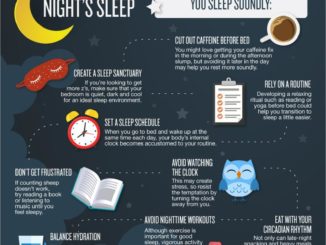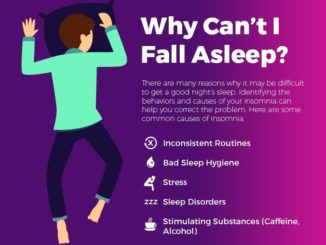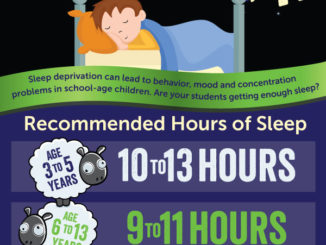
Sleep apnea is a sleep disorder marked by interrupted breathing, gasping for breath and heavy snoring. During the night, you are likely to experience pauses in breathing, sometimes even up to 30 times in a single hour. This condition leaves you feeling exhausted and irritable during the day, and affects your quality of life.
Long-term complications of sleep apnea include increasing the risk of diabetes, memory problems, sexual dysfunction, stroke and heart disease. If you are experiencing the symptoms indicated above, it is likely that you are suffering from a sleep disorder commonly known as Obstructive Sleep Apnea.
Obstructive Sleep Apnea arises when the soft tissues at the back of the throat relax and block the airways, causing you to snore loudly. However, snoring alone is not a sign that you are suffering from sleep apnea. It should be accompanied by other symptoms: difficulty concentrating, waking up with a dry throat, restless sleep, insomnia, excessive daytime drowsiness, irritability, and depression. Lack of energy and fatigue are the most significant symptoms of sleep apnea.
Medical Treatments
The diagnosis of sleep apnea can be worrying for you; however, it is a treatable condition. The moment you suspect that you could be suffering from this disorder, see your doctor for a proper diagnosis. The following are the most common medical interventions for obstructive sleep apnea.
1. Positive Airwave Pressure Devices
Positive Airway Pressure Devices are the most commonly used treatment for mild and severe forms of apnea. They are used with a range of masks, which you wear snugly over your mouth and nose as you sleep. They allow pressurized air to flow through your throat and prevent your airway from collapsing. The pressurized air is supplied through a tube attached to the device. Here are several options that are available to you.
• Continuous Positive Airway Pressure (CPAP) Device
This method is considered the ‘gold standard’ for treating obstructive sleep apnea. It entails wearing a mask-like device that covers your mouth and nose. This mechanism enhances the flow of air, which keeps your airwaves open while you sleep. The CPAP has in the past been found to be uncomfortable by the patients; however, it has been upgraded and is now quieter, lighter and user-friendly.
Consider this treatment option as it may give you immediate symptom relief and promote your general well being. Its consistent use has posted positive results.
Although CPAP is the most common treatment device for sleep apnea, there are others that are less intrusive and are also used to treat milder forms of sleep apnea. These are Adaptive Servo-Ventilation device, Expiratory Positive Airway Pressure (EPAP) and BiLevel Positive Airway Pressure (BPAP).
• Adaptive Servo-Ventilation Device
This device is for treating central sleep apnea and obstructive sleep apnea. It stores information on your regular breathing and spontaneously applies airway pressure to prevent pauses in your breath while you are sleeping.
• Expiratory Positive Airway Pressure (EPAP)
These devices may benefit people with mild to moderate apnea. They are less intrusive than the CPAP devices and only cover your nostrils. They keep the airway open.
• Bilevel Positive Airway Pressure (BPAP)
This device works automatically by adjusting pressure while you are sleeping. It adds more air pressure while you inhale and less when you exhale. This tool can be an alternative for those who have problems using CPAP. Some BPAP devices are so advanced that they send a breath if they detect a pause in your breathing.
2. Oral Appliances
These fit in the mouth just like a sports mouth guard. A dentist trained in dental sleep medicine should fix them. They bring your lower jaw and tongue forward during sleep; keeping the airway open. Mandibular repositioning device and tongue retaining device are the two common ones. The common side effects include saliva buildup, nausea, permanent change in the position of teeth, jaw, and mouth.
3. Surgery
Surgery should be your last option after you have exhausted all the others due to the risk of getting infected. It entails the removal of excess tissue at the back of your neck and inside your nose, removal of your tonsils and adenoids, as well as reconstructing your jaw to enlarge the upper airway.
As a patient, your medical practitioner should inform you of the treatment options available to you and advise on the best based on the diagnosis.
Self-help Treatments
Besides the medical interventions available, the following lifestyle adjustments and self- help strategies can help you manage the symptoms of sleep apnea.
1. Weight loss
Regardless of your weight, everyone has a layer of fat around the neck section. These fat cells grow and shrink depending on your body mass index. A higher body mass index means that you have more fat cells around your neck. The more significant they are, the more fluid they retain; consequently, they apply more pressure on the upper airway, which obstructs your breathing. Weight loss is therefore necessary for managing sleep apnea symptoms.
Take up an exercise regime that suits you, and complement it with a healthy diet. Exercise at least four times a week. It will reduce the amount of fat around your neck area; consequently improving the sleep apnea symptoms. Studies have shown that some individuals may no longer need treatment after weight loss.
Taking high fiber diets and lots of water will help you with weight loss and weight management.
2. Manage Your Alcohol Intake
Alcohol is a relaxant and will relax your throat muscles like the Uvula and Palate. These two muscles help control your breathing as you sleep. Alcohol relaxes them, blocking your airway; Consequently, you gasp for breath. Avoid taking alcohol, at least three hours before going to bed.
3. Avoid Smoking
Smoking contributes to inflammation and retention of fluids in your airwaves. This inflammation is likely to block your airwaves, which leads to disrupted sleep. Think about kicking this habit, and you will reap significantly through improved sleep quality.
4. Avoid Overuse of Sleeping Pills and Sedatives
Over the counter sleeping pills and sedatives have a similar effect to alcohol. They relax your throat muscles, obstruct the airway and interfere with your breathing. Avoid using them unless under a doctor’s prescription.
5. Adjust Your Sleeping Position
Your sleeping position directly impacts on your sleep apnea symptoms. Avoid sleeping on your back as it presses your palate tissues and the tongue against the back of your throat, which worsens your snoring.
Try sleeping on your side, using a pillow to elevate your head. You can consider sleeping on your stomach as well.
6. Treat Coughs, Congestion and Acid Reflux
These conditions can interfere with your normal breathing; therefore, it is essential to treat them. Coughs can irritate your upper airways and increase snoring. Nasal congestion creates difficulty breathing through the nose, worsening sleep apnea symptoms. Acid reflux can irritate your throat and voice box, causing swelling, thus increasing sleeping apnea symptoms.
The National Institute of Health found that sleep apnea is the number one cause of excessive daytime drowsiness in adults. It affects your productivity and general wellbeing. The condition can also lead to long-term health complications, some of which are life-threatening. Do not take it lightly if you experience symptoms associated with this disorder. Ensure that you visit your doctor and get a proper diagnosis, as sleep apnea is a treatable condition. Take action now!
Proudly WWW.PONIREVO.COM



